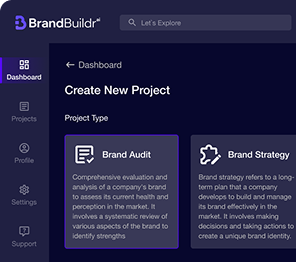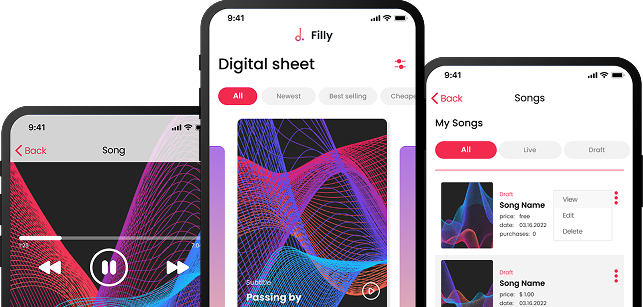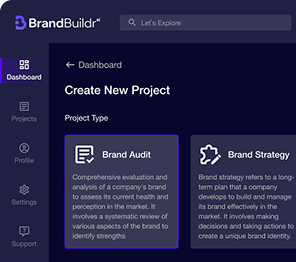The ability to scale quickly, iterate rapidly, and deliver seamless user experiences across devices is a competitive advantage. Flutter, backed by Google, is already a popular choice for mobile app development. But with the addition of Flutter Web, it has become a game-changer for startups looking to build web applications without rewriting their entire codebase. A Flutter Web Application allows you to use the same code to create apps for mobile, desktop, and the web, maximizing development speed, reducing costs, and improving consistency.
Startups that embrace this approach benefit from a streamlined development process, better resource allocation, and a scalable product that can evolve with user needs. If you’re looking to accelerate your project with cross-platform efficiency, consider hire Flutter developer support to get expert guidance from day one.
This article explores why Flutter Web is a perfect fit for startups, its advantages, the challenges of a unified codebase, and how it can be leveraged for rapid growth.

What is Flutter Web Application and How Does It Work?
At its core, a Flutter Web Application is a web-based software solution built using Flutter — a UI toolkit that enables developers to create visually stunning and natively compiled applications for mobile, web, and desktop from a single codebase. Flutter Web extends this capability to browsers, allowing you to build web apps with the same logic and UI as your mobile app.
Flutter uses the Dart programming language, which compiles to optimized JavaScript for web apps. This ensures that applications run smoothly in all modern browsers while maintaining the performance and responsiveness users expect from native apps.
What sets Flutter apart from traditional web development frameworks is its widget-based architecture. Every visual element is a widget, enabling a high level of customization and control. Developers can build pixel-perfect UIs that behave identically across platforms.
The Power of Flutter: One Codebase for Multiple Platforms
Flutter is the most popular cross-platform mobile framework used by global developers, according to a 2023 developer survey of Statista. One of the standout Flutter web app benefits is the ability to use a single codebase to build apps for Android, iOS, the web, Windows, macOS, and Linux. This is a dream come true for startups working with limited resources and tight deadlines.
Here’s what cross-platform Flutter development offers:
%20(1).png)
- Speed and Efficiency: No need to hire separate teams for web, Android, and iOS development.
- Consistency: Deliver a uniform user experience across devices and platforms.
- Maintainability: Easier to manage updates and bug fixes when changes are made in one codebase.
Startups thrive when they can move quickly, pivot on short notice, and deliver robust experiences. Flutter enables all this by eliminating the need to juggle multiple codebases. Whether you're launching your MVP or scaling to meet new user demands, Flutter makes it easier, faster, and smarter.
How Flutter Web Works Across Devices and Browsers
Flutter Web runs smoothly in all modern browsers including Chrome, Firefox, Safari, and Edge. It uses the CanvasKit and HTML renderer to display widgets on the screen. Depending on the complexity of your app and the target devices, Flutter intelligently switches between rendering modes to balance performance and fidelity.
Flutter Web supports:
- Responsive layouts: Design adaptive UIs that scale to different screen sizes.
- Routing and navigation: Manage URL-based navigation like any modern SPA (Single Page Application).
- Plugin system: Leverage plugins for common functionalities like authentication, state management, analytics, and more.
The key takeaway? Flutter Web isn't a watered-down version of Flutter for browsers, it’s a full-featured framework that enables startups to build production-ready web apps with the same performance and design quality as their mobile counterparts.
Why Flutter Web is Ideal for Startups?
In the startup world, time, cost, and adaptability are crucial. With limited resources and high expectations, founders and CTOs must make strategic technology choices that balance speed with sustainability. That’s where Flutter for startups shines. Leveraging Flutter Web Application development can be a game-changer by offering a unified codebase that dramatically cuts down on engineering workload while accelerating time-to-market.
Maintaining separate codebases for iOS, Android, and web is inefficient and drains resources, something few startups can afford. Flutter enables startups to consolidate their development efforts into one cohesive, maintainable project. This simplification opens the door to faster MVPs, smoother scaling, and better use of limited technical teams.
Streamlining Development with Flutter Web for Faster Time-to-Market
One of the most important advantages of using Flutter Web Application in a startup context is how it slashes development time. Startups are often racing against the clock to launch, capture market share, and prove their business model. With Flutter web development, the same UI and business logic can be shared across all platforms. That means:
- No repetitive work rewriting code for different platforms.
- Simultaneous releases across mobile and web.
- Rapid prototyping: validate ideas faster with working apps on multiple platforms from day one.
This efficiency gives startups a real edge. While competitors might be stuck in multi-platform development cycles, Flutter startups can iterate quickly, gather feedback, and ship updates faster. Faster releases = quicker user engagement = stronger product-market fit.
%20(1).png)
Additionally, the robust ecosystem of widgets, packages, and tools that come with Flutter helps speed things up. Features like hot reload, responsive design, and extensive UI components reduce development friction and keep your teams moving forward.
Cost-Efficiency and Resource Optimization for Startups
Let’s be real: most startups can’t afford to hire three full-stack teams, one for Android, one for iOS, and another for the web. Flutter removes that need. With Flutter for startups, one team can build and maintain all versions of the app.
This means:
- Lower development and maintenance costs
- Simplified testing and QA processes
- Reduced technical debt and code duplication
Instead of burning budget managing multiple silos, you can invest in refining your product, enhancing UX, or marketing your solution.
Flutter empowers startups to do more with less and that’s often the difference between surviving and thriving.
Beyond dollars and cents, this also eases the burden on engineering leadership. Managing one codebase makes it easier to onboard new devs, debug issues, and maintain feature parity across platforms. That level of clarity and focus can be a huge morale boost for small dev teams.
Key Advantages of Using Flutter Web for Scalable Products
When we talk about scalable web applications with Flutter, we're not just talking about apps that handle more users. We're talking about frameworks that adapt, grow, and evolve without requiring major rewrites or constant fire-fighting. That’s where Flutter Web Application development truly shines.
Flutter’s performance, adaptability, and modern architecture make it a natural choice for startups that have ambitious growth plans. With a scalable architecture in place, your app is ready to grow with your business.
Achieving Seamless Cross-Platform Scalability with Flutter
Scalability is more than just being able to serve more users; it’s about scaling across devices, platforms, and use cases. Flutter’s cross-platform capabilities allow your product to be accessible everywhere without additional cost or complexity.
Here’s how Flutter delivers on scalability:
- Adaptive UIs: Create responsive designs that work on all screen sizes.
- Single business logic layer: Reuse code across web, mobile, and desktop.
- Cloud-native friendly: Seamlessly integrate with Firebase, AWS, and other backend services.
Flutter’s rendering engine and widget system ensure that your app behaves consistently on all platforms, which means less debugging and a better user experience.
Moreover, as your startup expands and your app becomes more complex, Flutter’s plugin ecosystem supports advanced features, payment integrations, real-time updates, analytics, and more, making it easier to scale functionally as well as technically.
Enhancing Performance and Speed with Flutter Web
Performance is often the deciding factor between user retention and churn. Flutter’s architecture is built for speed. Unlike traditional web apps that rely on DOM manipulation, Flutter Web Application uses a canvas-based rendering model (CanvasKit), which provides near-native performance.
Benefits of this architecture include:
- Smooth animations and transitions.
- Low-latency rendering, even with complex UIs.
- Consistent 60fps performance on modern browsers.
With fewer layers between the code and the browser rendering, performance bottlenecks are minimized. And because you're working with one codebase, performance optimizations benefit every platform simultaneously.
This high-speed delivery ensures users stay engaged, especially on performance-sensitive apps like fintech tools, interactive dashboards, or real-time platforms, common in startup ecosystems.

How Flutter Web Supports Fast Prototyping and Iteration for Startups
Startups live and die by their ability to adapt, test, and iterate. Time spent stuck in development cycles is time lost on market insights and growth. Fortunately, a Flutter Web Application enables startups to build and evolve products faster through rapid prototyping and quick feedback loops.
Flutter is not just for production-grade apps, it’s also perfect for MVPs and beta versions. With Flutter for startups, you can launch, learn, and pivot at lightning speed, all while keeping development costs manageable and the team focused.
The Role of Flutter in Rapid Prototyping for Startups
One of Flutter’s most celebrated features is hot reload, which lets developers see UI changes instantly without restarting the app. This dramatically reduces the feedback loop, making it easier to test ideas, tweak designs, and fix bugs on the fly.
Here’s how Flutter streamlines prototyping:
- Reusable components: Flutter’s widget system makes it simple to drag and drop pre-built UI elements into place.
- Quick iteration: Test UX flows and design alternatives in real-time.
- Unified dev environment: Developers use the same codebase for web and mobile prototypes, reducing development overhead.
For startups, this means a prototype that looks and feels like the real thing, no need for separate design tools or mockup platforms. Instead of spending weeks building a prototype and more weeks refining it, you can iterate in days. This helps stakeholders make informed decisions quickly and gives investors and users a better idea of the product vision.
Accelerating Iteration and User Feedback with Flutter Web
With Flutter Web Application development, you can deploy changes to users almost instantly. Unlike mobile apps that require app store approvals, web apps can be updated in real-time. This allows for:
- Faster testing of new features
- Continuous delivery and deployment
- Instant feedback collection via analytics and user input
As feedback rolls in, your team can apply fixes and improvements within hours, not weeks. That responsiveness helps build trust with early adopters and increases your odds of finding product-market fit before funds run dry.
For any startup working in a competitive or fast-moving space, the ability to test and iterate quickly is priceless. Flutter Web gives you the tools to do it effectively and at scale.
Building and Maintaining a Unified Codebase: Challenges and Solutions
As attractive as a single codebase might sound, maintaining it across web, mobile, and desktop does present unique challenges. Different platforms come with different requirements, user expectations, and technical limitations. Still, with the right strategies and the built-in power of Flutter Web Application, these challenges can be addressed effectively.
Overcoming Potential Challenges with a Unified Codebase
Some common pain points of a unified codebase include:
- UI differences between platforms (e.g., gestures on mobile vs. mouse interactions on desktop).
- Platform-specific functionality like file access, camera use, or offline storage.
- Performance tuning across browsers and device types.
Fortunately, Flutter for startups offers several ways to mitigate these:
- Platform detection APIs let you conditionally render widgets or trigger behavior based on the device.
- Custom plugins can be created or integrated to handle edge cases where native platform features differ.
- Responsive design tools allow you to adapt the layout based on screen size or orientation.
Flutter's layered architecture means you can isolate platform-specific code and still maintain a clean, modular codebase. The Dart language also supports strong typing and clean architecture, reducing spaghetti code as your app grows.
Best Practices for Maintaining a Flutter Web Application Codebase
To maintain a unified codebase efficiently, follow these best practices:
- Separate concerns: Use the MVVM or Clean Architecture pattern to decouple business logic from UI.
- Use feature flags: Toggle features on/off per platform without duplicating code.
- Automate testing: Use Flutter’s built-in testing tools to automate unit, widget, and integration tests.
- Leverage CI/CD pipelines: Automate builds and deployments for web and mobile to keep your release cycle agile.
By following these guidelines, startups can maintain high code quality, avoid platform-specific headaches, and keep their development cycle lean and agile. The result? A faster-moving team and a more stable, scalable product.

Why Choose Flutter Web for Your Startup’s Growth Strategy?
Startups need growth strategies that are lean, flexible, and future-proof. Choosing a development framework that aligns with those goals is critical. A Flutter Web Application checks every box: cost-efficiency, scalability, speed, and performance. For startups that want to reach users on every screen with minimal overhead, Flutter is a strategic asset.
Future-Proofing Your Startup with Flutter Web Applications
Flutter is backed by Google and continues to evolve rapidly. With frequent updates, a growing community, and support for the latest technologies, Flutter is poised to remain a go-to framework for cross-platform development.
Here’s how Flutter Web Application future-proofs your startup:
- Access to emerging platforms: Flutter is expanding into wearables, embedded devices, and beyond.
- Community-driven innovation: Thousands of packages and plugins are created by an active dev community.
- Strong corporate backing: Google’s ongoing investment ensures long-term support and innovation.
Adopting Flutter early gives startups a head start. As the ecosystem grows, your app remains competitive and adaptable, without needing a complete rewrite down the line.
Why Flutter Web is the Right Choice for Startup Innovation
Innovation requires freedom to build, test, pivot, and scale. With a Flutter app for startup growth, startups gain the technical foundation to move fast and break things responsibly.
- Launch faster with one codebase.
- Scale confidently with reliable performance across platforms.
- Optimize resources by keeping dev teams small and efficient.
Simply put, Flutter Web empowers startups to turn big ideas into reality, faster, smarter, and with fewer compromises.
Final Thoughts: Embrace the Power of Flutter Web for Scalable Startup Success
If you're a startup founder or CTO navigating the digital product development space, adopting a Flutter Web Application strategy can be the game-changing move you need. With its unified codebase, rapid development cycles, and seamless cross-platform capabilities, Flutter enables startups to break down barriers, reduce costs, and scale faster than traditional development approaches.
Flutter for startups isn’t just about cutting development time, it’s about unlocking a strategic advantage. By streamlining your tech stack and aligning your team around one set of tools, you gain focus, speed, and consistency. This clarity not only helps in launching MVPs faster but also lays down a scalable foundation for long-term growth.
Whether you’re building a B2B SaaS platform, a consumer-facing app, or an internal tool, Flutter Web provides the flexibility, performance, and efficiency you need to grow without getting bogged down by platform silos and tech debt.
Why Flutter Web is the Smart Bet for Modern Startups
- Single codebase = faster development & fewer bugs
- High performance across mobile, web, and desktop
- Responsive UI = great user experience anywhere
- Ecosystem support = rapid feature development
- Cost savings = more budget for marketing, UX, or innovation
More than a framework, Flutter Web is a platform for innovation. Its ability to empower small teams to build big things has already been proven by countless successful startups.
So if your startup is gearing up to launch or scale its next digital product, the smart move is clear: explore Flutter Web Application development today. Contact us today to explore how Flutter Web can accelerate your success.
FAQ
How does a unified codebase in Flutter accelerate web application development?
A unified Flutter codebase allows developers to build web, mobile, and desktop apps from the same project. This dramatically reduces development time, eliminates duplicate work, and ensures faster go-to-market. With shared logic and UI components, teams can maintain consistency across all platforms.
Why is Flutter a strong choice for building modern web applications?
Flutter offers fast rendering, a rich widget library, and exceptional performance thanks to its Skia graphics engine. It enables highly interactive, visually appealing web apps that feel like native experiences. For startups, Flutter provides the flexibility to scale quickly with minimal technical overhead.
What are the benefits of using Flutter for both web and mobile apps?
Using Flutter for web and mobile provides consistent design, shared business logic, and reduced maintenance costs. Teams only manage one codebase instead of multiple platform-specific projects. This results in lower development expenses, faster updates, and improved long-term scalability.
How can startups optimize performance when developing a Flutter web application?
Startups can optimize performance by minimizing large assets, deferring heavy scripts, enabling tree-shaking, and using responsive layouts. Leveraging lazy loading and efficient state management also ensures faster load times and smoother user experiences across devices.
What types of projects benefit most from Flutter’s unified codebase strategy?
Projects that require cross-platform consistency—such as SaaS dashboards, admin panels, e-commerce solutions, and productivity apps—benefit most from Flutter. These applications rely on reusable UI elements and shared logic, making Flutter an ideal choice for achieving uniform performance on web and mobile.
How does Flutter reduce long-term maintenance for growing startups?
Flutter reduces maintenance by centralizing updates, bug fixes, and feature improvements in one codebase. Teams don’t need separate web and mobile developers, which lowers costs and simplifies workflows. This allows startups to focus on innovation instead of managing fragmented technical stacks.
Heading 1
Heading 2
Heading 3
Heading 4
Heading 5
Heading 6
Lorem ipsum dolor sit amet, consectetur adipiscing elit, sed do eiusmod tempor incididunt ut labore et dolore magna aliqua. Ut enim ad minim veniam, quis nostrud exercitation ullamco laboris nisi ut aliquip ex ea commodo consequat. Duis aute irure dolor in reprehenderit in voluptate velit esse cillum dolore eu fugiat nulla pariatur.
Block quote
Ordered list
- Item 1
- Item 2
- Item 3
Unordered list
- Item A
- Item B
- Item C
Bold text
Emphasis
Superscript
Subscript





















.avif)



.avif)

.avif)


